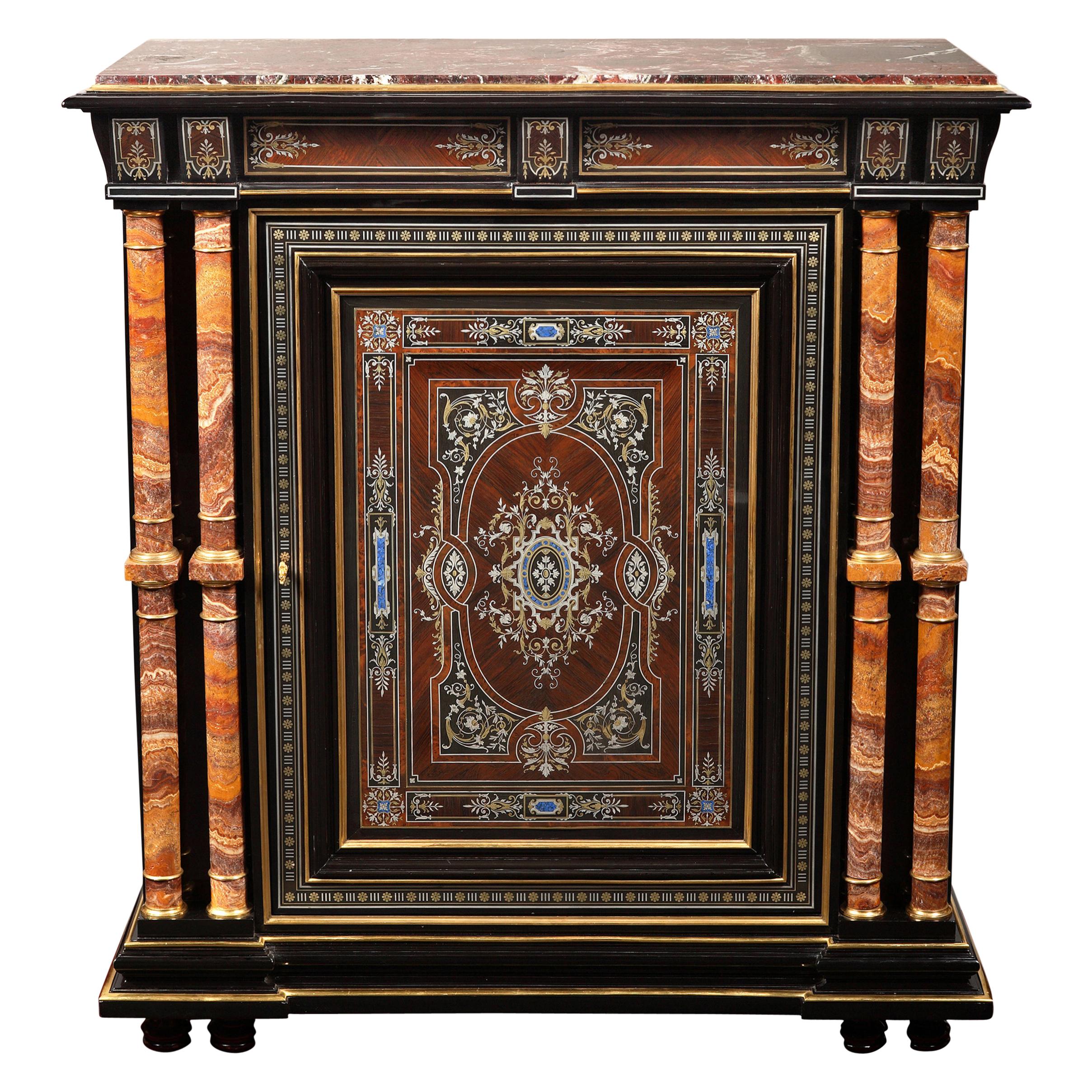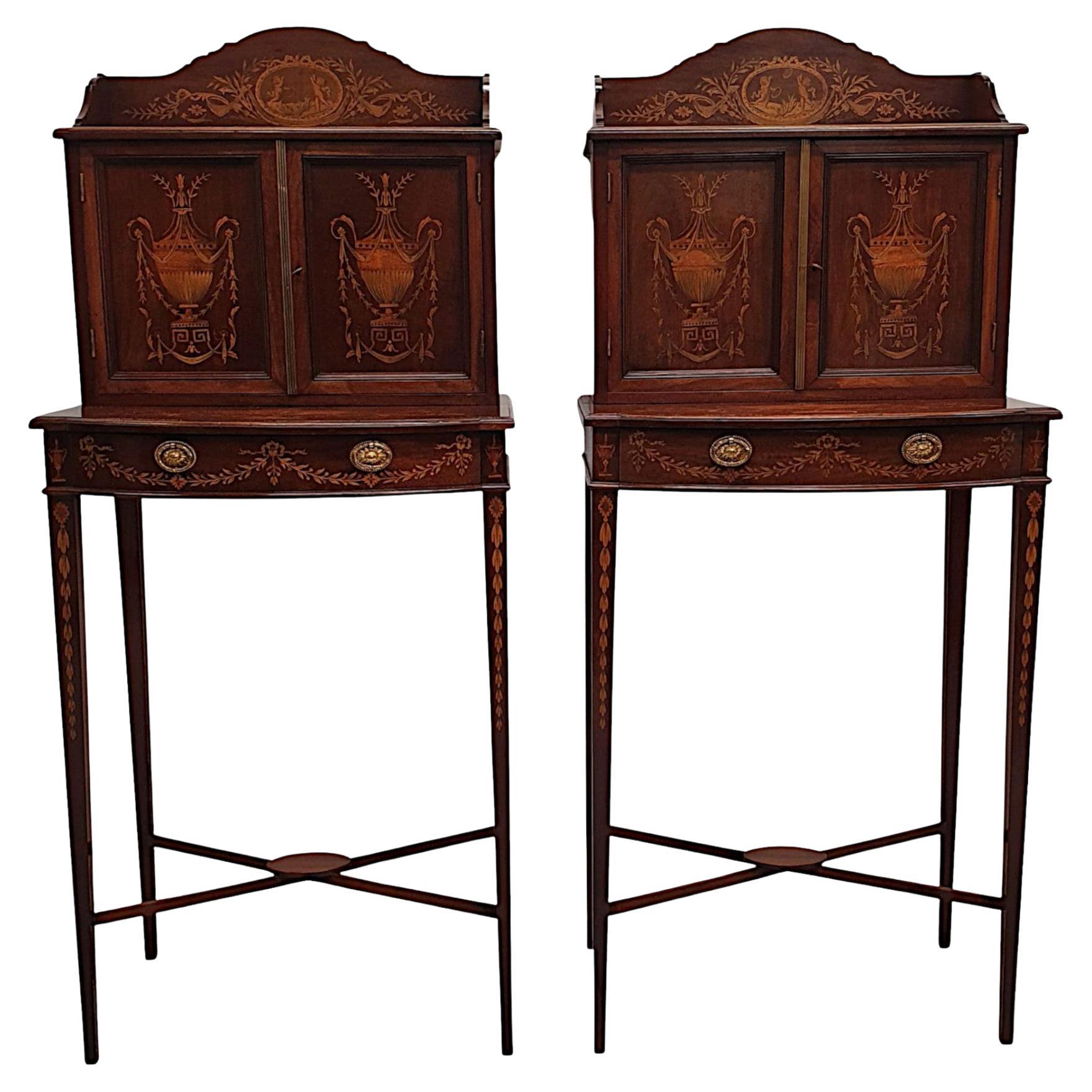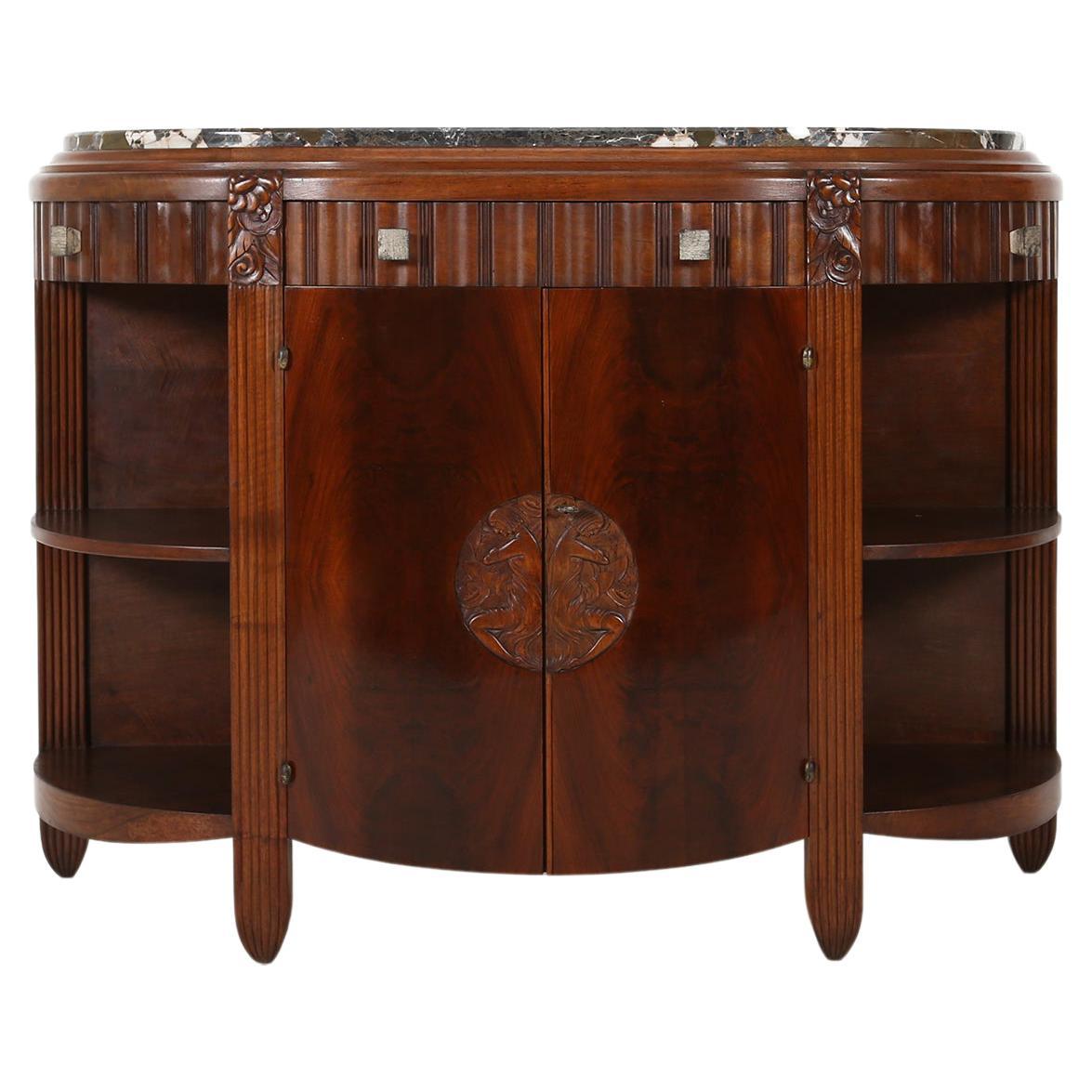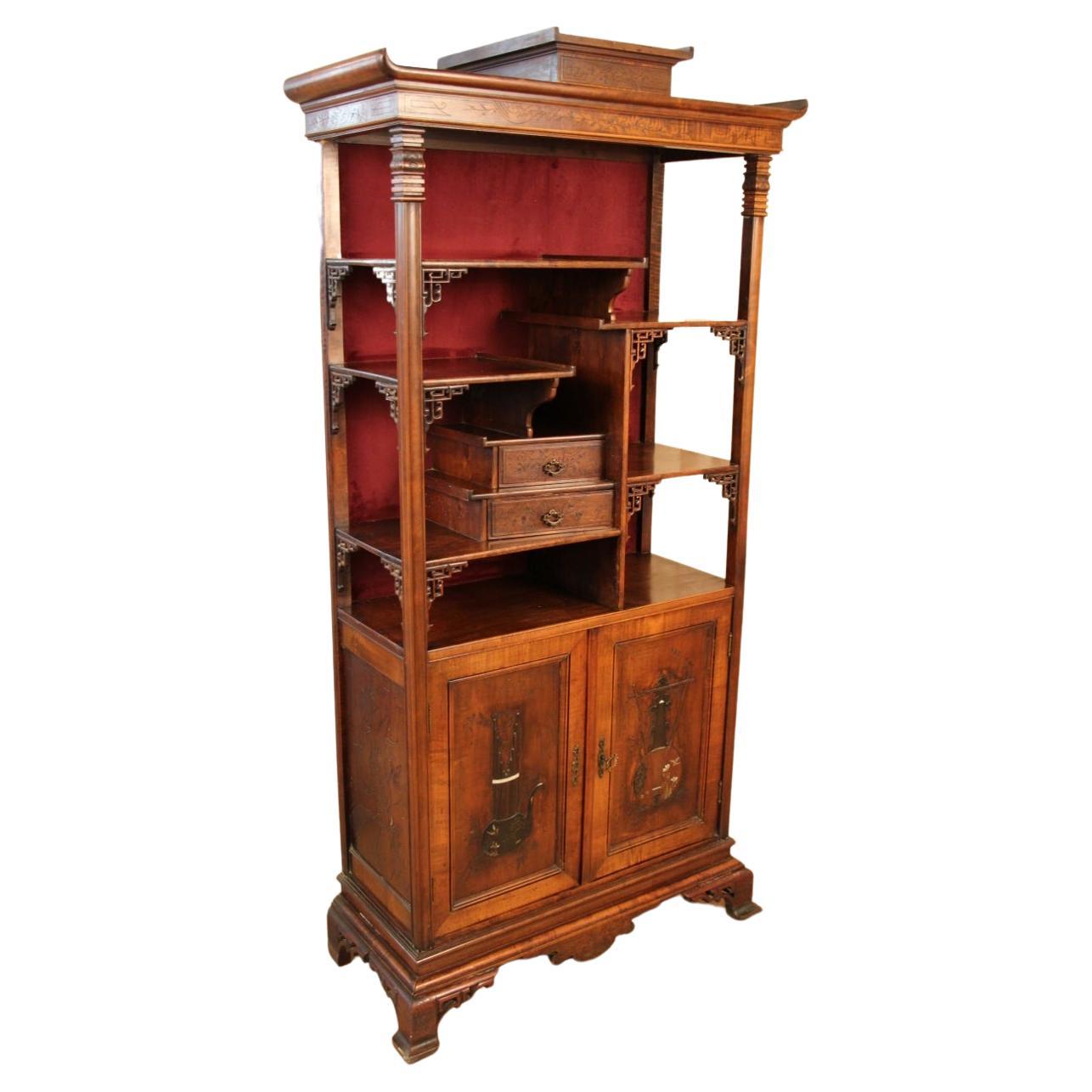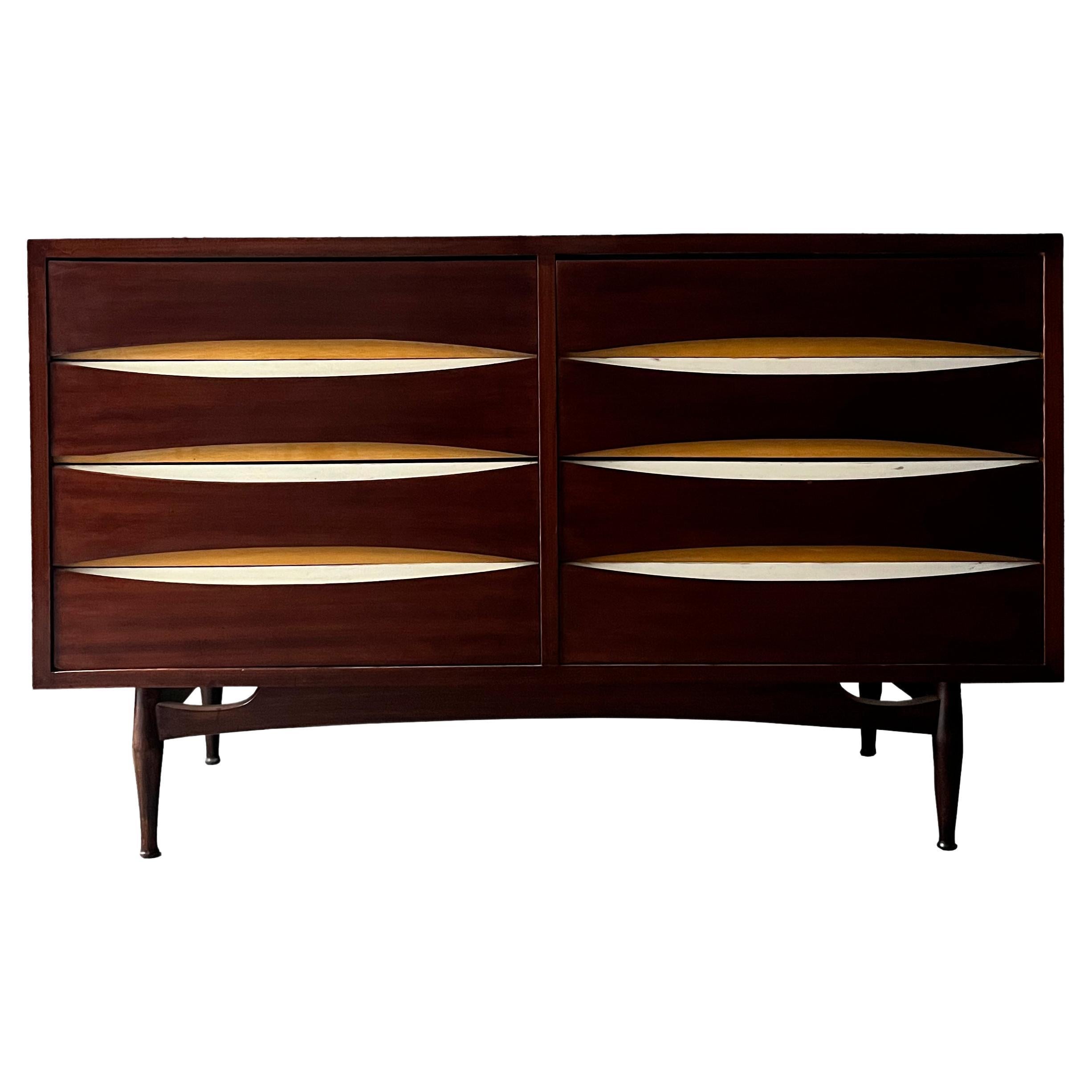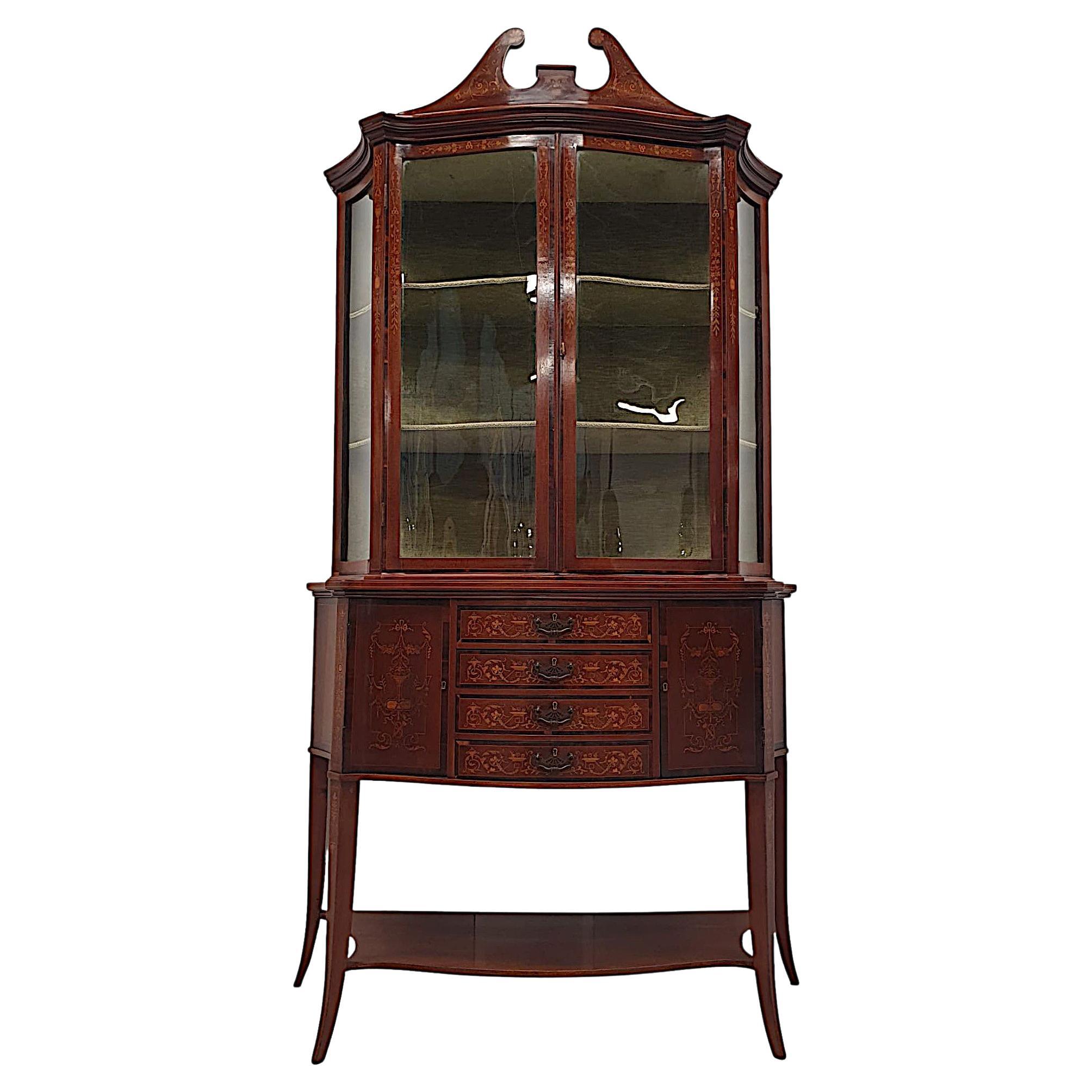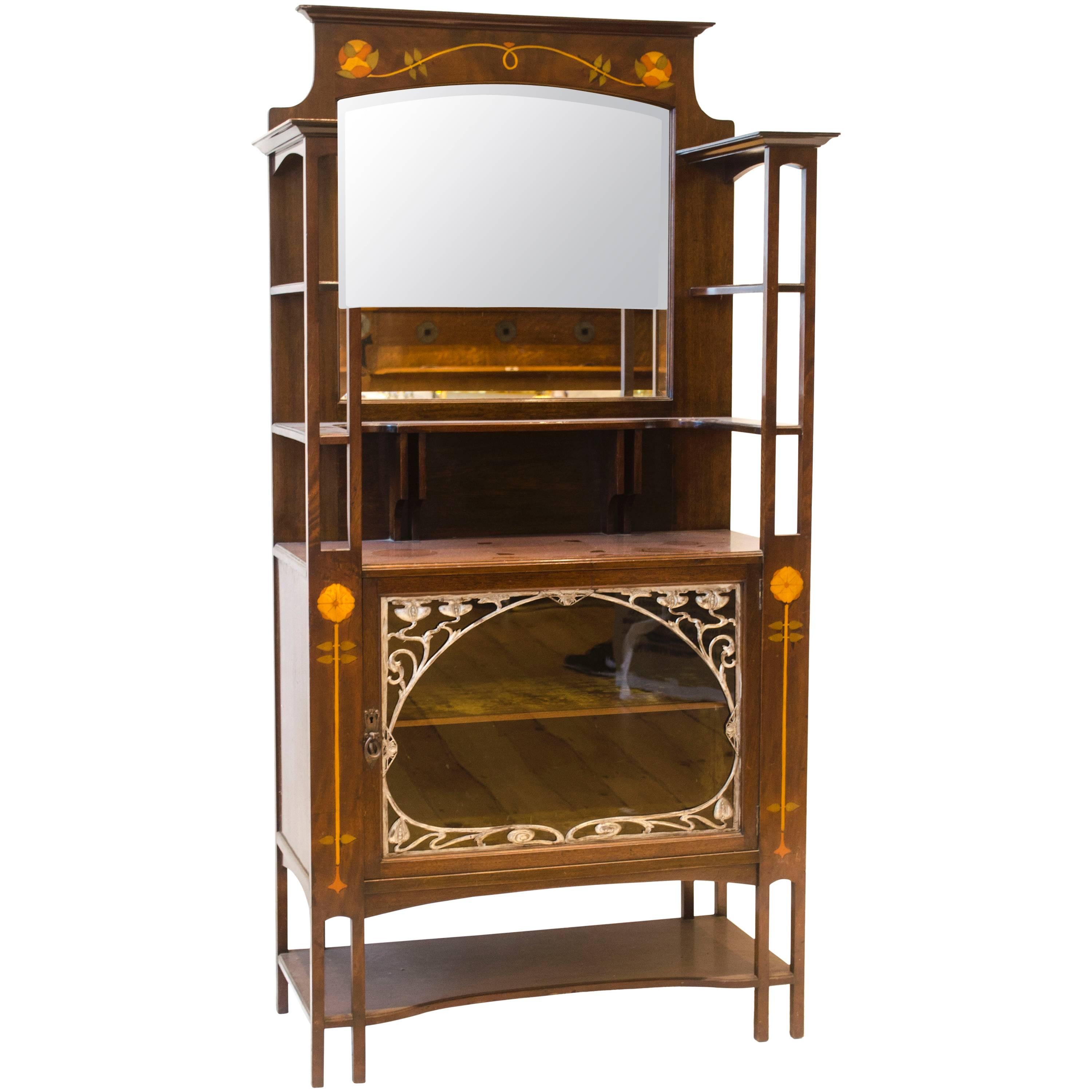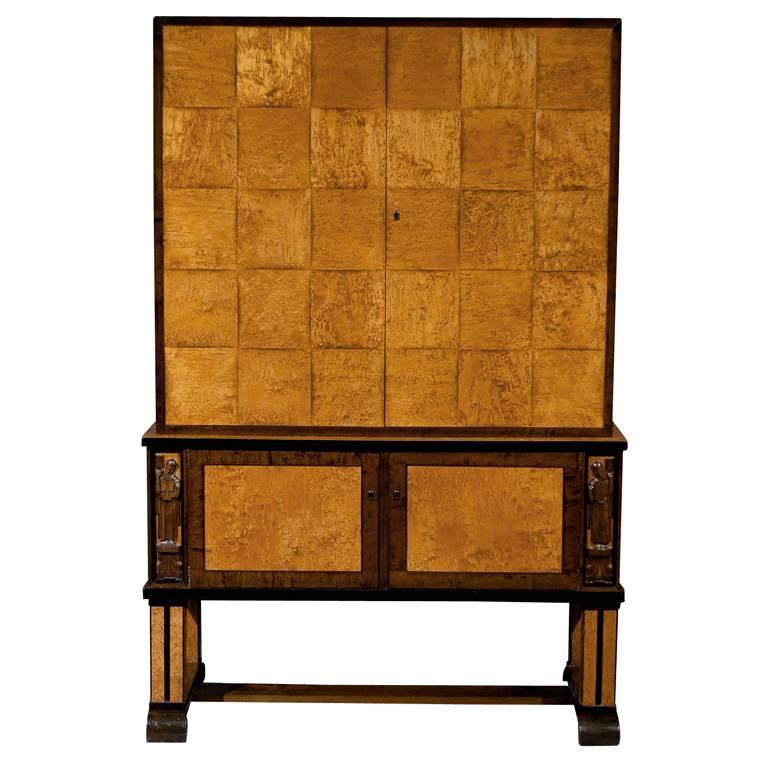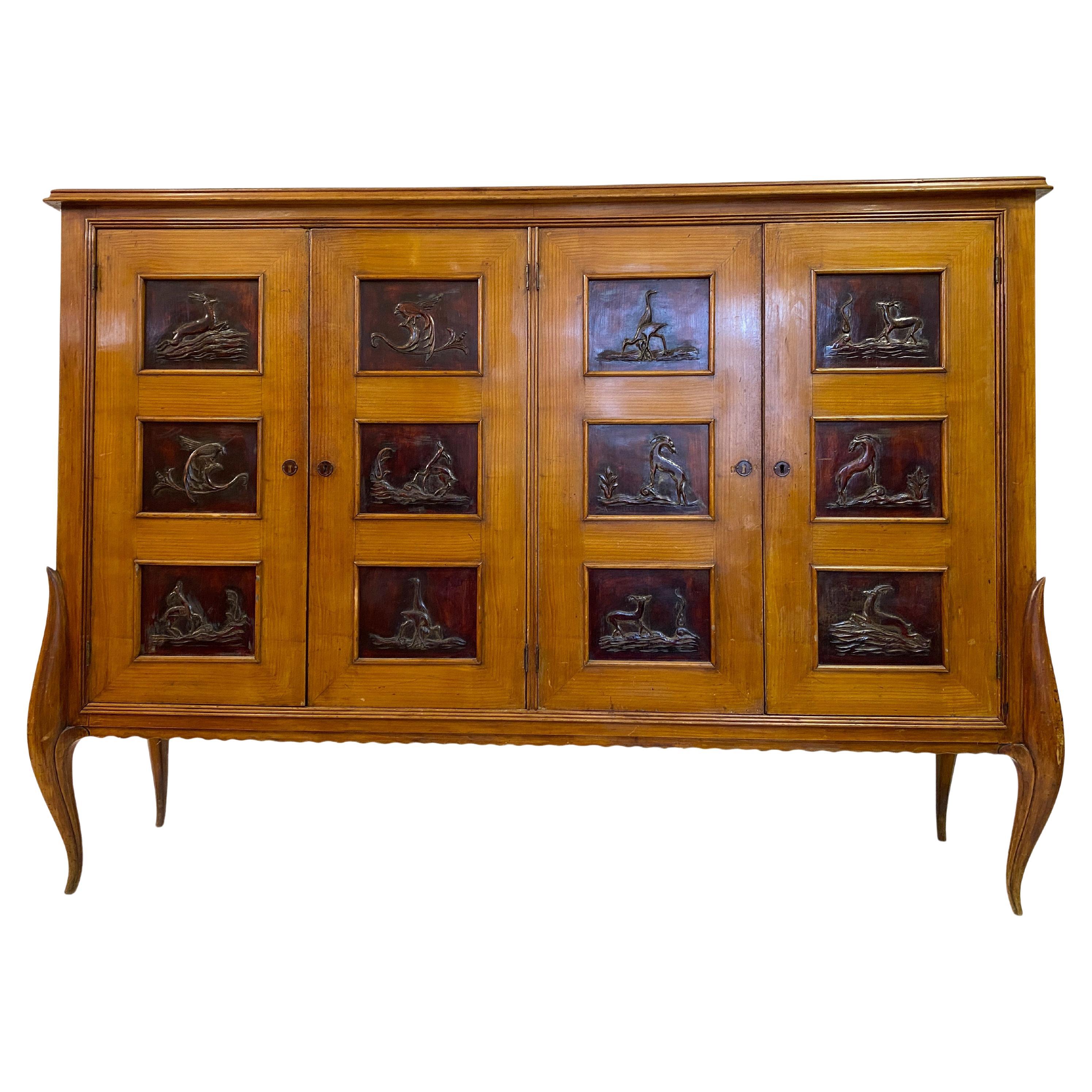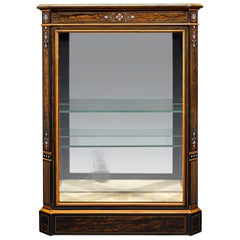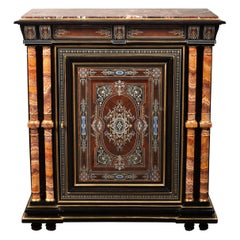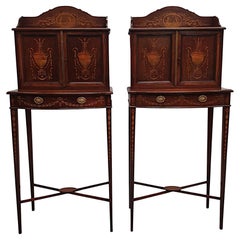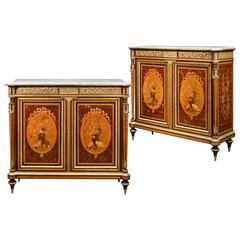
Exceptional Inlaid Cabinets Attributed to Victor Paillard
View Similar Items
Want more images or videos?
Request additional images or videos from the seller
1 of 5
Exceptional Inlaid Cabinets Attributed to Victor Paillard
About the Item
- Creator:Victor Paillard (Maker)
- Dimensions:Height: 43.75 in (111.13 cm)Width: 50 in (127 cm)Depth: 17.63 in (44.79 cm)
- Sold As:Set of 2
- Style:Napoleon III (Of the Period)
- Materials and Techniques:
- Place of Origin:
- Period:
- Date of Manufacture:circa 1850
- Condition:
- Seller Location:New Orleans, LA
- Reference Number:Seller: 30-47071stDibs: LU89115787303
About the Seller
5.0
Recognized Seller
These prestigious sellers are industry leaders and represent the highest echelon for item quality and design.
Established in 1912
1stDibs seller since 2010
93 sales on 1stDibs
Typical response time: 7 hours
More From This SellerView All
- 19th Century Coromandel Inlaid VitrineLocated in New Orleans, LAHighly-prized coromandel, or East Indian ebony, was used to create this beautiful Victorian vitrine. Featuring delicate inlay in the Victorian/Edwardian style and glass panels framed in the equally luxurious satinwood, this cabinet is constructed to fit flush against a wall with baseboards. Elegant cabinets such as this are perfect for displaying one's treasures, but with original locks, keys, mirrors and fleur-de-lis fabric, this case is a prized possession unto itself, circa 1890. Measures: 30" wide x 14 ½" deep x 41 ½" high. Coromandel ebony is variegated brown and black, often called "streaky," wood. It is considered a highly valuable wood for turnery, fine cabinet...Category
Antique 19th Century English Victorian Vitrines
MaterialsGlass, Mirror, Ebony, Satinwood
- English Upright Cane CabinetLocated in New Orleans, LAThis English cane cabinet exhibits classical style and impeccable design. Crafted of lustrous Cuban mahogany, this upright case features a beautifully paneled door which opens to rev...Category
Antique 19th Century English Cabinets
MaterialsBrass
$28,500 - Mahogany Upright Cane CabinetLocated in New Orleans, LAClassical style and impeccable design distinguish this English upright cane cabinet. Crafted of lustrous Cuban mahogany, this case is comprised of a beautifully paneled door which op...Category
Antique 19th Century English Cabinets
MaterialsBrass
- King George I Ambassadorial Secrétaire-CabinetLocated in New Orleans, LAThis highly important secrétaire-cabinet was crafted for and specially ordered by King George I for the British Ambassador to Russia. From its craftsmanship and materials to its exceptional artistry, it is a work of royal and historic significance that exudes power in each and every detail. The broken pediment at its apex features the simplified royal coat of arms bearing the king’s crown, while the interior is adorned by portraits of the British Royal Family. Placed within the ambassador’s St. Petersburg home, this entirely unique piece of furniture would have been a potent reminder of England's grandeur and political importance. Relations between England and Russia during this period were at an all-time high. Peter the Great had traveled to England in 1698 as part of his widely known “Grand Embassy” tour, wherein he attempted to gain foreign support against the Ottoman Empire. He spent a period of nearly four months there, meeting with King William III and his court on numerous occasions. Noted academic Arthur MacGregor wrote concerning the impact of the trip, “For two decades following Peter's visit, British influence in Russia reached a peak. It manifested itself in social custom, in craft practice and in ships and naval organization... it reached a significant sector of the population before relations cooled once again and the two nations pulled back from this era of unprecedented cordiality.” First and foremost, however, it is a reminder of British might and influence. By the reign of King George I, England had come into its own as a world power. Unique in its design, this cabinet is a reflection of the country’s might. It is crafted from the highest-quality solid walnut and burr walnut adorned by gilded lock plates and engraved hinges. The presence of ormolu at its apex and lining the doors was a rarity for this period, and its addition makes manifest the importance of the design. The outer doors open to reveal multiple interiors, including fifteen separate drawers around a central cupboard; the cupboard doors each bear mezzotint portraits of George I and his father, Ernest Augustus, Elector of Hanover. An etching after the portrait of George I dating to circa 1716 is in London’s Royal Academy. A second, inner pair of doors are adorned by mezzotints of the Prince and Princess of Wales (later Queen Caroline and George II), which are both after portraits by Sir Godfrey Kneller dated 1716 in the Royal Collection. A final portrait is revealed on the very interior of the cabinet, where a mezzotint of Frederick, Anne, Amelia and Caroline, children of the Prince of Wales, resides. An etching (circa 1715-1720) after this portrait can be found in the National Portrait Gallery (London). Apart from its abundance of royal portraiture, the cabinet features stunning painted decoration, including floral designs as well as clouds, birds and trees in a bucolic motif reminiscent of Eden. Its lower portion is a study in both form and function, featuring a fitted secrétaire-drawer above three additional drawers for storage. The cabinet appears in The Shorter Dictionary of English Furniture by R. Edwards from 1964, a text that is regarded as the bible of British furniture design. Edwards describes it as a “writing cabinet...given by George I to the British Ambassador at the Russian court.” The cabinet was likely made for the 18th-century German diplomat and writer Friedrich Christian Weber, who represented English interests at the Russian court from 1714 until 1719. Although Weber’s tenure as ambassador was relatively short, while in St. Petersburg, he authored his account entitled Das veraenderte Russland (The Present State of Russia), which was published in three volumes in 1721, 1739 and 1740. It may, however, also have been made for George Douglas, 2nd Earl of Dumbarton, who served as ambassador alongside Weber in 1716. Diplomatic relations ceased between the two countries in 1721. In 1928, the cabinet appeared for sale at the International Exhibition of Antiques & Works of Art in Olympia. It had previously been in the collection of the Woltner family of Bordeaux, the celebrated vintners who owned the estate Château Laville Haut-Brion and produced wine of the same name. According to the family, Monsieur Woltner was given the cabinet as a gift from an aunt who lived in Russia for many years. After leaving the Woltner collection, the cabinet was acquired by William Berry...Category
Antique 18th Century English Georgian Secretaires
MaterialsBrass
- Mahogany Bureau Cabinet After Thomas ChippendaleBy Thomas ChippendaleLocated in New Orleans, LAThis extraordinary Irish bureau cabinet was crafted based on a design for a desk and bookcase drawn from Thomas Chippendale’s famed 1762 edition of The Gentleman and Cabinet-Maker's ...Category
Antique 18th Century Irish Chippendale Cabinets
MaterialsMirror, Mahogany
- 19th Century Watch Winding Display CabinetLocated in New Orleans, LAThis incredible, one-of-a-kind watch display cabinet brings together the beauty of an antique with the functionality of modern technology. Crafted of mahogany, this 19th century jewelry display cabinet...Category
Antique 19th Century Unknown Empire Cabinets
MaterialsMahogany
You May Also Like
- Exceptional Marquetry Cabinet Attributed to Susse Frères, France, Circa 1880By Susse FreresLocated in PARIS, FRBlackened wood side-cabinet attributed to Susse Frères, opening with a central cupboard door underlined with gilt bronze rods, flanked by two small onyx c...Category
Antique 1880s French Cabinets
MaterialsLapis Lazuli, Onyx, Marble, Brass, Bronze
- A Rare Pair of Exceptional Edwardian Cabinets Attributed to Edward and RobertsBy Edward & RobertsLocated in Dublin, IEAn extremely rare pair of exceptional mahogany side cabinets attributed to Edwards and Roberts, fabulously carved with gorgeously rich patination and grain. Beautifully detailed, cro...Category
Early 20th Century English Edwardian Cabinets
MaterialsBrass
- 19C English Marquetry Inlaid Corner Cabinet Attributed to Collinson and LockBy Collinson & LockLocated in Dallas, TXPRESENTING A GORGEOUS late 19th Century British made corner cabinet, made of beautiful rosewood and profusely inlaid with marquetry and faux ivory. Made in London, by Collinson and ...Category
Antique Late 19th Century English High Victorian Corner Cupboards
MaterialsBone, Ebony, Rosewood, Satinwood
$4,860 Sale Price59% Off - Cabinet Attributed to Léon JallotBy Léon JallotLocated in Meulebeke, BEArt Deco cabinet attributed to the French designer Léon Jallot. Made of solid wood and a beautiful black marble top. This moon shaped cabinet has some ni...Category
Vintage 1930s French Art Deco Cabinets
MaterialsMarble
- Monumental Cabinet Attributed to Giuseppe TerragniBy Giuseppe TerragniLocated in Lake Worth Beach, FLArtist/Designer: Giuseppe Terragni (Italian, 1904-1943), attributed Additional Information: Cabinet is from the Novecento Italiano period. Between each column are five (5) inwardly ...Category
Vintage 1920s Italian Cabinets
MaterialsWood
- Japanese Collector's Cabinet Attributed To ViardotBy Gabriel ViardotLocated in charmes, FRCabinet in the style of Viardot, with inlays in the doors, the fabric of the bottom has been changed, minimal wear from use and time in good condition, some old holes from xylophagesCategory
Antique Late 19th Century French Japonisme Cabinets
MaterialsWood
Recently Viewed
View AllMore Ways To Browse
17 Century Display Cabinets
5 Doors Display Cabinet
Pair Of Napoleon Iii Cabinet
4 Graces
Industrie Bronze
3 Graces
Cabinet Napoleon 3
Three Graces Sculpture
French Kitchen Clock
Antique Double Sided Clock
Double Sided Antique Clock
The 3 Graces
Ameublement Antique
Parisian Fireplace
Fireplace 4 Columns
Saint Display Case
Marquetry Inlaid Clock
A L Barye
